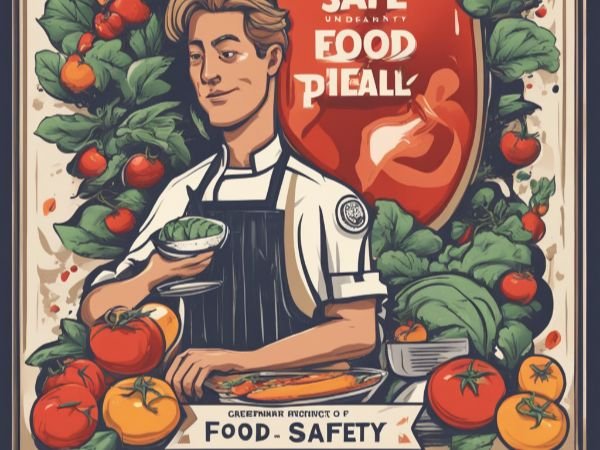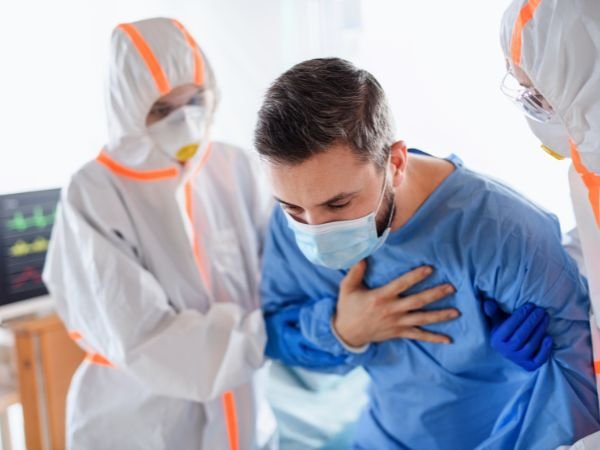Physical Address
Jashpur (C.G.)
496220
Food safety is a crucial aspect of our daily lives, as it directly impacts our health and well-being. Poor food safety practices can lead to various issues, including foodborne illnesses and contamination. It is essential to understand the importance of maintaining good food safety standards to protect ourselves and our loved ones. in this article we are covering “what is the best way to prevent poor food safety”.

There are several causes of poor food safety that we should be aware of Improper handling, storage, and preparation of food. When food is not handled correctly, such as not washing hands before cooking or using the same cutting board for raw meat and vegetables without proper cleaning, it can lead to cross-contamination and the spread of harmful bacteria.
To ensure the safety of our food, it is crucial to address these causes of poor food safety. By promoting proper handling, storage, and preparation of food.

salmonellosis, E. coli infection, and norovirus infection.
Salmonellosis is caused by the Salmonella bacteria and is typically contracted by consuming contaminated food, such as raw or undercooked eggs, poultry, or meat.
Symptoms of salmonellosis include:
To prevent salmonellosis, it is important to practice proper food handling and cooking techniques, such as:

E. coli infection is caused by the Escherichia coli bacteria, particularly the strain known as E. coli O157:H7. This infection is commonly associated with undercooked ground beef, unpasteurized milk, and contaminated fruits and vegetables.
Symptoms of E. coli infection
To prevent E. coli infection, it is important to practice proper food handling and cooking techniques, such as:.
Norovirus infection, also known as the stomach flu, is caused by the norovirus and is highly contagious. It can be transmitted through contaminated food, water, or surfaces.
Symptoms of norovirus infection:

To prevent norovirus infection, it is important to practice proper food handling and cooking techniques, such as:
In summary, these common diseases associated with poor food safety highlight the importance of practicing proper food handling, cooking, and hygiene techniques to prevent the spread of harmful bacteria and viruses.
1. Campylobacteriosis: is a bacterial infection caused by the Campylobacter bacteria, commonly found in undercooked poultry, unpasteurized milk, and contaminated water.
Symptoms include diarrhea, abdominal pain, and fever. To prevent campylobacteriosis, it is crucial to cook poultry thoroughly, avoid cross-contamination, and practice good hygiene when handling raw meat.
2. Listeriosis: is caused by the Listeria monocytogenes bacteria, which can be found in various foods, including deli meats, soft cheeses, and raw vegetables.
severe symptoms such as fever, muscle aches, and even meningitis. Pregnant women, newborns, and individuals with weakened immune systems are particularly vulnerable. Preventive measures include consuming pasteurized dairy products, reheating deli meats, and practicing proper food handling and storage.
Hepatitis A: is a viral infection that affects the liver and is primarily transmitted through contaminated food or water.
Symptoms include fatigue, nausea, and jaundice. Good hygiene practices, such as washing hands thoroughly and consuming clean water and properly cooked food, are essential for preventing hepatitis A. Vaccination is also available for long-term protection.

Healthcare costs:
Foodborne illnesses can lead to hospitalizations, doctor visits, and medication expenses. According to the World Health Organization (WHO), the healthcare costs associated with foodborne diseases are estimated to be in the billions of dollars globally each year. These costs burden healthcare systems and can lead to increased insurance premiums for individuals and businesses.
Loss of productivity:
Food-related illnesses can cause individuals to miss work or be hospitalized, resulting in reduced efficiency for both employees and employers. Furthermore, when outbreaks happen in sectors like agriculture or food processing, workers may be incapable of fulfilling their responsibilities, leading to lower production and financial setbacks for businesses.
Litigation and legal costs:
Poor food safety practices can lead to lawsuits and legal settlements. When individuals become ill due to contaminated food, they may seek compensation for medical expenses, lost wages, and pain and suffering. Businesses involved in food production or distribution may face lawsuits, which can result in substantial legal fees, settlements, or even bankruptcy.
Loss of consumer confidence:
Outbreaks of foodborne illnesses can undermine the trust that consumers have in the food industry. When consumers no longer believe that certain products or brands are safe, they might choose to switch to alternative options or even reduce their overall consumption. As a result, affected businesses may experience a decline in sales, profits, and market presence. Restoring consumer confidence can be a time-consuming and expensive endeavor.
Food recalls and disposal:
When contaminated food is identified, it often needs to be recalled from stores and consumers’ homes. The costs associated with recalling and disposing of potentially contaminated products can be substantial for businesses. This includes costs for communication, transportation, destruction of products, and potential liability.
Health risks:
Foodborne illnesses can cause severe health consequences, ranging from mild discomfort to hospitalization or even death. Certain groups, such as young children, pregnant women, the elderly, and individuals with weakened immune systems, are particularly vulnerable to the negative health effects of foodborne diseases.
Trust and confidence:
Foodborne illness outbreaks can erode public trust and confidence in the food industry and regulatory systems. This can lead to increased skepticism towards food safety regulations and a lack of confidence in the overall food supply. Such loss of trust can hinder cooperation between consumers, producers, and regulators.
Social inequalities:
Poor food safety practices can exacerbate existing social inequalities. For example, individuals with lower incomes may have limited access to safe and nutritious food options, increasing their vulnerability to foodborne illnesses.
Impact on tourism and trade:
The tourism industry and international trade can suffer adverse effects from food safety problems. When outbreaks of foodborne illnesses happen, it can discourage tourists from going to certain places or countries. Likewise, regions with a history of poor food safety may face export limitations on their food products, resulting in economic setbacks for those areas.

The best way to prevent poor food safety is by following these simple steps:
By following these guidelines and consistently practicing safe food handling procedures, the risk of poor food safety can be significantly reduced
Proper handling and storage of food:
This involves following safe food handling practices, such as washing hands before handling food, using clean utensils and cutting boards, and avoiding cross-contamination between raw and cooked foods.
Importance of washing hands before handling food:
Hands can harbor bacteria and other pathogens that can contaminate food. Proper handwashing with soap and warm water for at least 20 seconds helps prevent the spread of harmful microorganisms.
Safe storage temperatures for different types of food:

Different types of food have specific temperature requirements for safe storage. For example, raw meats should be stored at temperatures below 40°F (4°C) to prevent bacterial growth. It is crucial to adhere to these guidelines to prevent foodborne illnesses.
Proper labeling and rotation of perishable items:
Ensuring that perishable items are properly labeled with dates of production or expiration and implementing a first-in, first-out (FIFO) system can help prevent the consumption of expired or spoiled food.
Regular cleaning and sanitation:
Frequent cleaning and sanitizing of food preparation and storage areas, as well as equipment and utensils, help eliminate bacteria and other contaminants that could cause foodborne illnesses.
Employee training and education:
Providing comprehensive training to employees on proper food handling practices, personal hygiene, and food safety protocols is essential. It helps ensure that all staff members are knowledgeable and capable of maintaining high food safety standards.
Implementing a Hazard Analysis Critical Control Point (HACCP) system:
HACCP is a systematic approach to identify potential hazards in the food production process and establish critical control points to prevent or reduce those hazards. Implementing a HACCP system can help prevent poor food safety by identifying and addressing potential risks.
Consumer education and awareness:
Educating consumers about safe food handling practices, proper storage, and cooking temperatures can significantly contribute to preventing foodborne illnesses. Providing clear instructions and information on food labels can also help consumers make informed decisions.
Regular inspections and audits:
Conducting regular inspections and audits of food establishments by health authorities or third-party organizations can help identify and rectify any potential food safety issues. These inspections ensure compliance with regulations and promote a culture of continuous improvement in food safety practices.


By following these tips, you can significantly reduce the risk of foodborne illnesses and ensure the safety of the food you consume at home.
There are several effective ways to prevent poor food safety and it is important to emphasize the collective responsibility in ensuring food safety.
Education and training:
Proper education and training of food handlers and consumers is crucial in preventing poor food safety. This includes knowledge about proper food handling techniques, storage and preparation guidelines, and understanding the risks associated with foodborne illnesses.
Regular inspections and audits:
Regular inspections and audits of food establishments by regulatory authorities help identify potential hazards and ensure compliance with food safety regulations. This can help prevent contamination and ensure that proper hygiene practices are being followed.
Implementing good manufacturing practices (GMPs):
GMPs are a set of guidelines and procedures that ensure food is produced and handled in a safe and hygienic manner. Adhering to GMPs helps prevent contamination and maintain the quality of the food throughout the production process.
Implementing Hazard Analysis Critical Control Point (HACCP) system:
HACCP is a systematic approach to food safety that identifies and evaluates potential hazards at every stage of the food production process. It helps prevent hazards and ensures that critical control points are monitored and controlled effectively.
Enhanced food safety regulations:
Governments and regulatory bodies should continuously update and enforce food safety regulations to ensure that food establishments are operating in a safe and hygienic manner. This includes setting standards for food handling, storage, labeling, and transportation.
Consumer awareness and responsibility:
Consumers play a vital role in preventing poor food safety. It is important for individuals to be aware of safe food handling practices, check for expiration dates, and report any suspected cases of foodborne illnesses. By making informed choices and holding food establishments accountable, consumers can contribute to overall food safety.
Collaboration and communication:
Food safety is a collective responsibility that requires collaboration and communication between various stakeholders including government agencies, food establishments, suppliers, and consumers. Sharing information, best practices, and lessons learned can help prevent poor food safety and improve overall food safety standards.
In this way we covered topic for “what is the best way to prevent poor food safety” regarding post if you have any suggestion, then please comment below.
The best way to prevent food safety issues is by practicing good hygiene, following proper food handling and storage techniques, cooking food thoroughly, and ensuring a clean and sanitized kitchen environment.
Prevention approaches to food safety include implementing Hazard Analysis and Critical Control Points (HACCP) systems, adhering to Good Manufacturing Practices (GMPs), conducting regular inspections and audits, providing employee training, and maintaining proper sanitation procedures.
Preventive actions for food safety include washing hands thoroughly before handling food, storing food at proper temperatures, avoiding cross-contamination between raw and cooked foods, cooking food to appropriate temperatures, and regularly cleaning and sanitizing kitchen surfaces and utensils.
The four ways to ensure food safety are practicing cleanliness and personal hygiene, preventing cross-contamination, cooking food to safe temperatures, and storing food at the correct temperatures.
The five ways to keep food safe are cleaning, separating, cooking, chilling, and avoiding risky foods (such as raw eggs, undercooked meat, and unpasteurized dairy products).
The five basic food safety practices are frequently washing hands, keeping raw and cooked foods separate, cooking food thoroughly, storing food at proper temperatures, and avoiding cross-contamination.
Seven tips to keep food safe include washing hands with soap and water, separating raw and cooked foods, using different cutting boards for different food types, cooking food to appropriate temperatures, refrigerating perishable foods promptly, avoiding expired or damaged food, and avoiding leaving food at room temperature for too long.
The seven most important food safety rules are practicing good personal hygiene, avoiding cross-contamination, cooking food thoroughly, keeping food at safe temperatures, using safe water and raw materials, preventing pests and insects, and maintaining a clean and sanitized kitchen environment.
The seven important things to keep food safe include storing food at appropriate temperatures, avoiding cross-contamination, washing hands and utensils regularly, cooking food to safe temperatures, practicing safe food handling during preparation, keeping the kitchen environment clean, and following proper food storage guidelines.